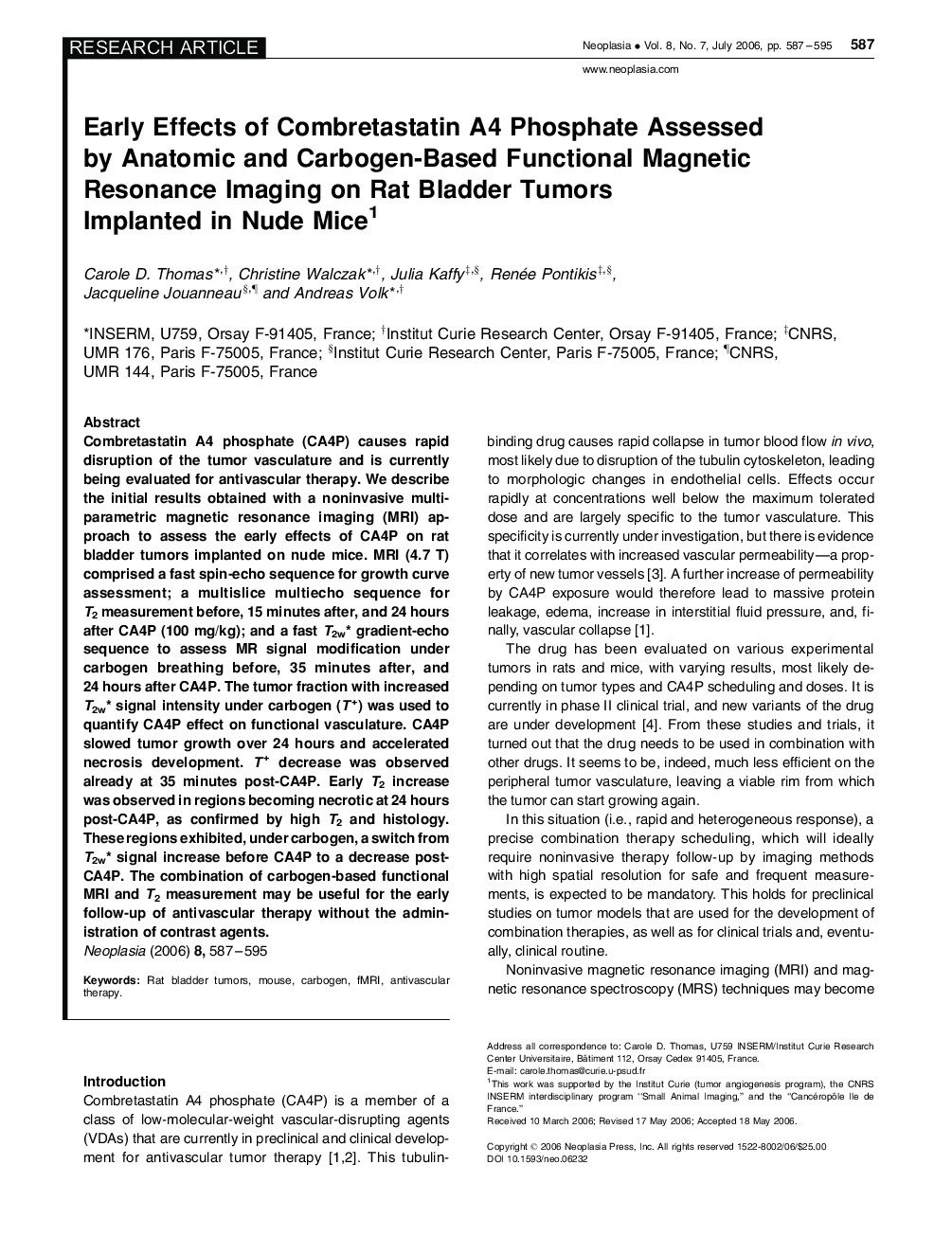| کد مقاله | کد نشریه | سال انتشار | مقاله انگلیسی | نسخه تمام متن |
|---|---|---|---|---|
| 2152297 | 1090059 | 2006 | 9 صفحه PDF | دانلود رایگان |

Combretastatin A4 phosphate (CA4P) causes rapid disruption of the tumor vasculature and is currently being evaluated for antivascular therapy. We describe the initial results obtained with a noninvasive multiparametric magnetic resonance imaging (MRI) approach to assess the early effects of CA4P on rat bladder tumors implanted on nude mice. MRI (4.7 T) comprised a fast spin-echo sequence for growth curve assessment; a multislice multiecho sequence for T2 measurement before, 15 minutes after, 24 hours after CA4P (100 mg/kg); and a fast T2W* gradient-echo sequence to assess MR signal modification under carbogen breathing before, 35 minutes after, 24 hours after CA4P. The tumor fraction with increased T2W* signal intensity under carbogen (T+) was used to quantify CA4P effect on functional vasculature. CA4P slowed tumor growth over 24 hours and accelerated necrosis development. T+ decrease was observed already at 35 minutes post-CA4P. Early T2 increase was observed in regions becoming necrotic at 24 hours post-CA4P, as confirmed by high T2 and histology. These regions exhibited, under carbogen, a switch from T2W* signal increase before CA4P to a decrease postCA4P. The combination of carbogen-based functional MRI and T2 measurement may be useful for the early follow-up of antivascular therapy without the administration of contrast agents.
Journal: Neoplasia - Volume 8, Issue 7, July 2006, Pages 587-595